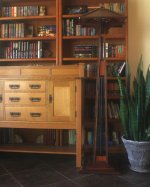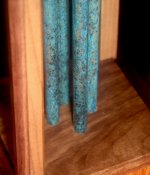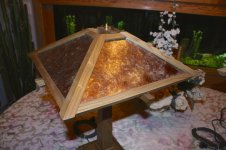Hi C26, I feel your pain

I'm still searching for the right finish "tone" and style for the house projects. Everything here is slightly different. I suppose at soem point I can just clear it all out then start over!
Larry, I feel the concept of alternating grain direction for table tops was always a reasonable approach to minimize the collective effect of board cupping, but it was elevated to gospel by "The Norm" in his TV show.
Wood will be wood and do whatever it wants as far as movement, we can control it, but not eliminate it.
My mantra is to always seek the "best" visual appearance. This is one of the places where the craftsman can fine tune their project versus the factory, where they typically ignore the choice.
That said, the long grain joint between two boards provides ultimate glue bond strength, You can add splines/biscuits/dominos for help with alignment, but the joint itself should not fail.
To control warping, first step is to acclimate your stock to your environment before you begin. This will allow you to plane/joint out the bulk of any cupping or bowing before assembly.
Once glued into a full sized surface, table tops can have hidden support like cross bars dovetailed or screwed in from below (still allowing for wood expansion/contraction), or have breadboard style ends that keep it all flat.
Attachment to the table base along the perimeter with "figure 8's" or "Z" clips will also provide significant structure to keep the top flat.
The key idea is to provide a way for the wood to move in any joints that have cross-grain connections.








